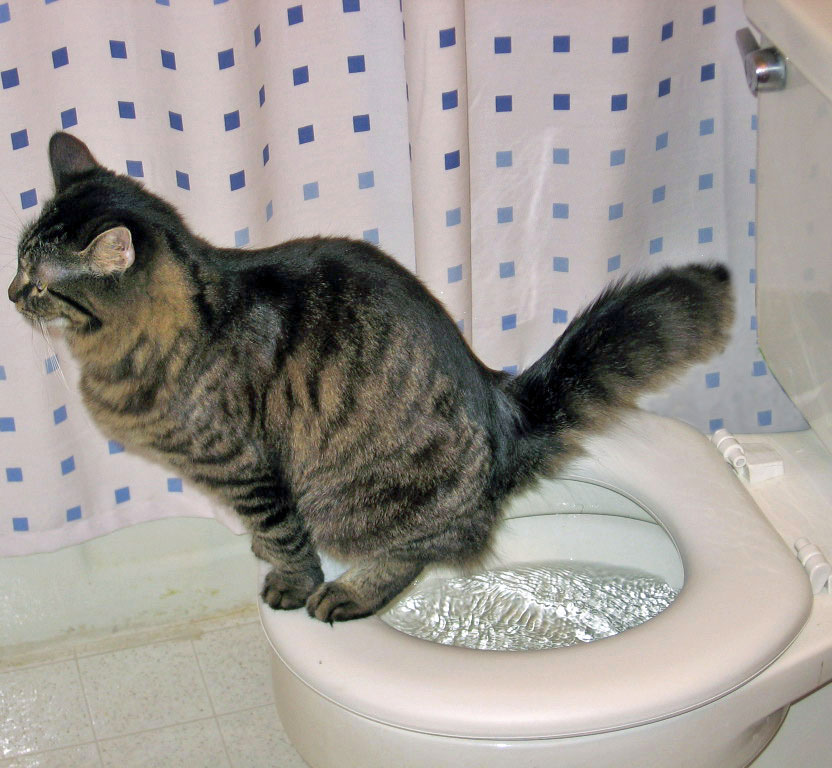Potential Issues of Flushing Cat Poop Down Your Toilet - Safeguard Your Plumbing
Potential Issues of Flushing Cat Poop Down Your Toilet - Safeguard Your Plumbing
Blog Article
We've stumbled on this post about How to Dispose of Cat Poop and Litter Without Plastic Bags directly below on the net and concluded it made sense to talk about it with you on this site.

Introduction
As pet cat proprietors, it's important to be mindful of how we take care of our feline pals' waste. While it may seem hassle-free to purge pet cat poop down the commode, this practice can have destructive effects for both the environment and human health.
Environmental Impact
Flushing cat poop introduces dangerous virus and bloodsuckers into the water system, posing a substantial risk to water communities. These pollutants can negatively influence aquatic life and compromise water top quality.
Wellness Risks
Along with ecological worries, flushing cat waste can also position health threats to human beings. Pet cat feces may have Toxoplasma gondii, a bloodsucker that can cause toxoplasmosis-- a potentially extreme ailment, specifically for pregnant females and people with weakened immune systems.
Alternatives to Flushing
Fortunately, there are much safer and more accountable methods to get rid of feline poop. Think about the adhering to options:
1. Scoop and Dispose in Trash
One of the most usual method of disposing of pet cat poop is to scoop it right into an eco-friendly bag and toss it in the trash. Be sure to utilize a specialized trash scoop and dispose of the waste immediately.
2. Use Biodegradable Litter
Select eco-friendly cat trash made from products such as corn or wheat. These trashes are environmentally friendly and can be securely thrown away in the trash.
3. Hide in the Yard
If you have a backyard, consider burying feline waste in an assigned location away from vegetable yards and water sources. Make certain to dig deep enough to prevent contamination of groundwater.
4. Mount a Pet Waste Disposal System
Invest in an animal garbage disposal system specifically developed for feline waste. These systems utilize enzymes to break down the waste, lowering smell and ecological influence.
Verdict
Responsible family pet ownership prolongs beyond providing food and sanctuary-- it also entails appropriate waste management. By avoiding flushing feline poop down the toilet and choosing different disposal methods, we can minimize our environmental footprint and shield human health.
Why Can’t I Flush Cat Poop?
It Spreads a Parasite
Cats are frequently infected with a parasite called toxoplasma gondii. The parasite causes an infection called toxoplasmosis. It is usually harmless to cats. The parasite only uses cat poop as a host for its eggs. Otherwise, the cat’s immune system usually keeps the infection at low enough levels to maintain its own health. But it does not stop the develop of eggs. These eggs are tiny and surprisingly tough. They may survive for a year before they begin to grow. But that’s the problem.
Our wastewater system is not designed to deal with toxoplasmosis eggs. Instead, most eggs will flush from your toilet into sewers and wastewater management plants. After the sewage is treated for many other harmful things in it, it is typically released into local rivers, lakes, or oceans. Here, the toxoplasmosis eggs can find new hosts, including starfish, crabs, otters, and many other wildlife. For many, this is a significant risk to their health. Toxoplasmosis can also end up infecting water sources that are important for agriculture, which means our deer, pigs, and sheep can get infected too.
Is There Risk to Humans?
There can be a risk to human life from flushing cat poop down the toilet. If you do so, the parasites from your cat’s poop can end up in shellfish, game animals, or livestock. If this meat is then served raw or undercooked, the people who eat it can get sick.
In fact, according to the CDC, 40 million people in the United States are infected with toxoplasma gondii. They get it from exposure to infected seafood, or from some kind of cat poop contamination, like drinking from a stream that is contaminated or touching anything that has come into contact with cat poop. That includes just cleaning a cat litter box.
Most people who get infected with these parasites will not develop any symptoms. However, for pregnant women or for those with compromised immune systems, the parasite can cause severe health problems.
How to Handle Cat Poop
The best way to handle cat poop is actually to clean the box more often. The eggs that the parasite sheds will not become active until one to five days after the cat poops. That means that if you clean daily, you’re much less likely to come into direct contact with infectious eggs.
That said, always dispose of cat poop in the garbage and not down the toilet. Wash your hands before and after you clean the litter box, and bring the bag of poop right outside to your garbage bins.
https://trenchlesssolutionsusa.com/why-cant-i-flush-cat-poop/

As a fervent reader about Can You Flush Cat Poop Down The Toilet?, I was thinking sharing that excerpt was a smart idea. Don't hesitate to take the opportunity to promote this blog if you enjoyed reading it. Thanks a lot for taking the time to read it.
Call Today Report this page